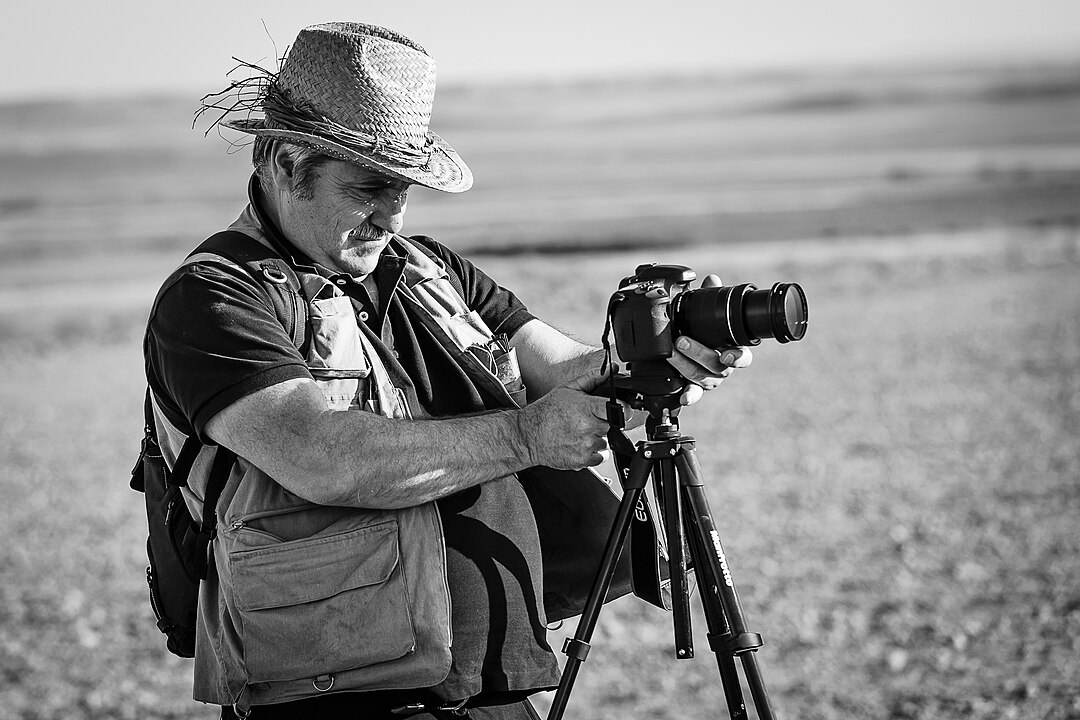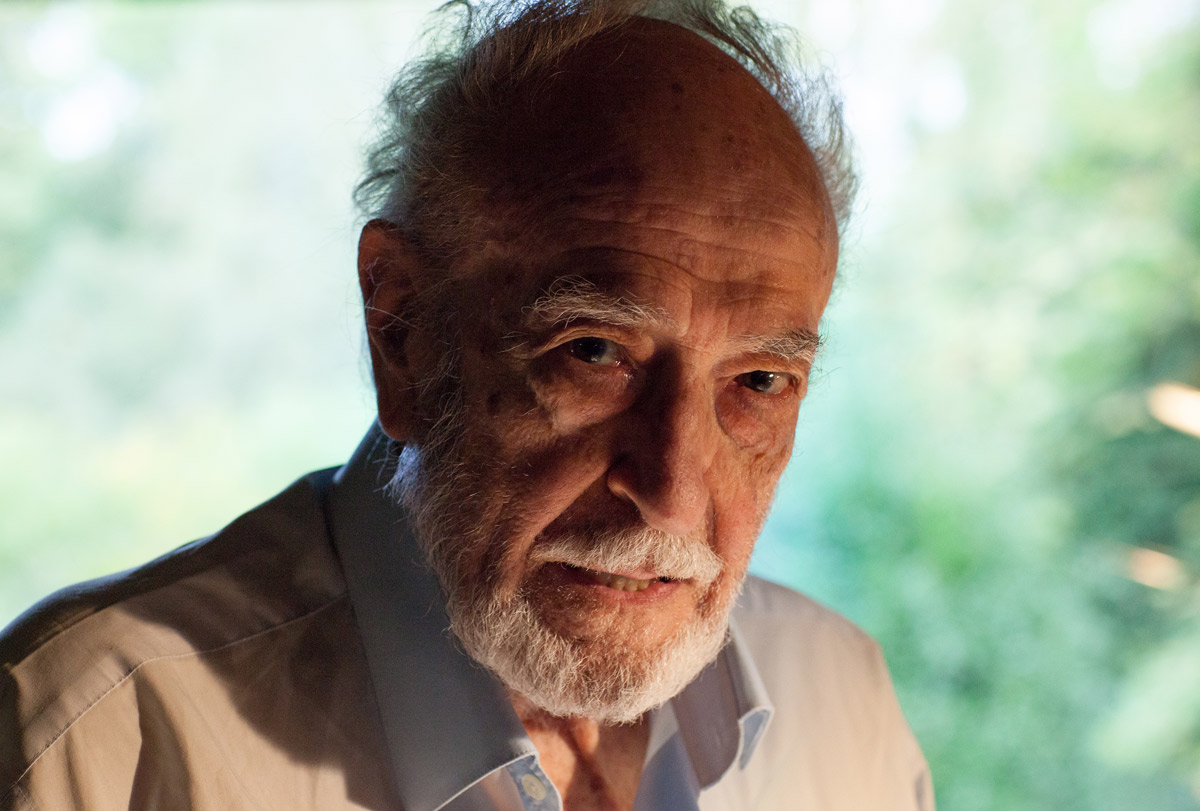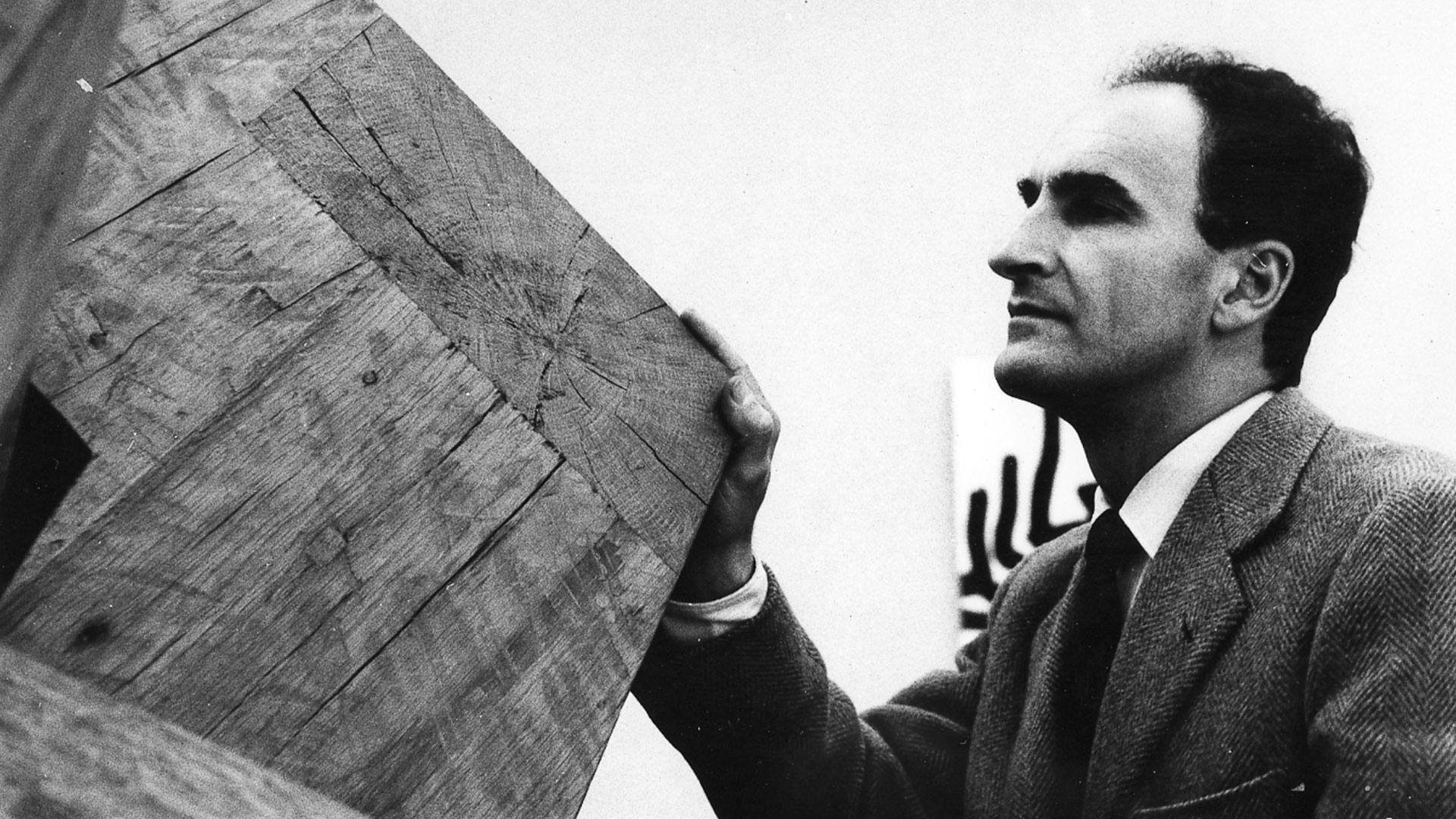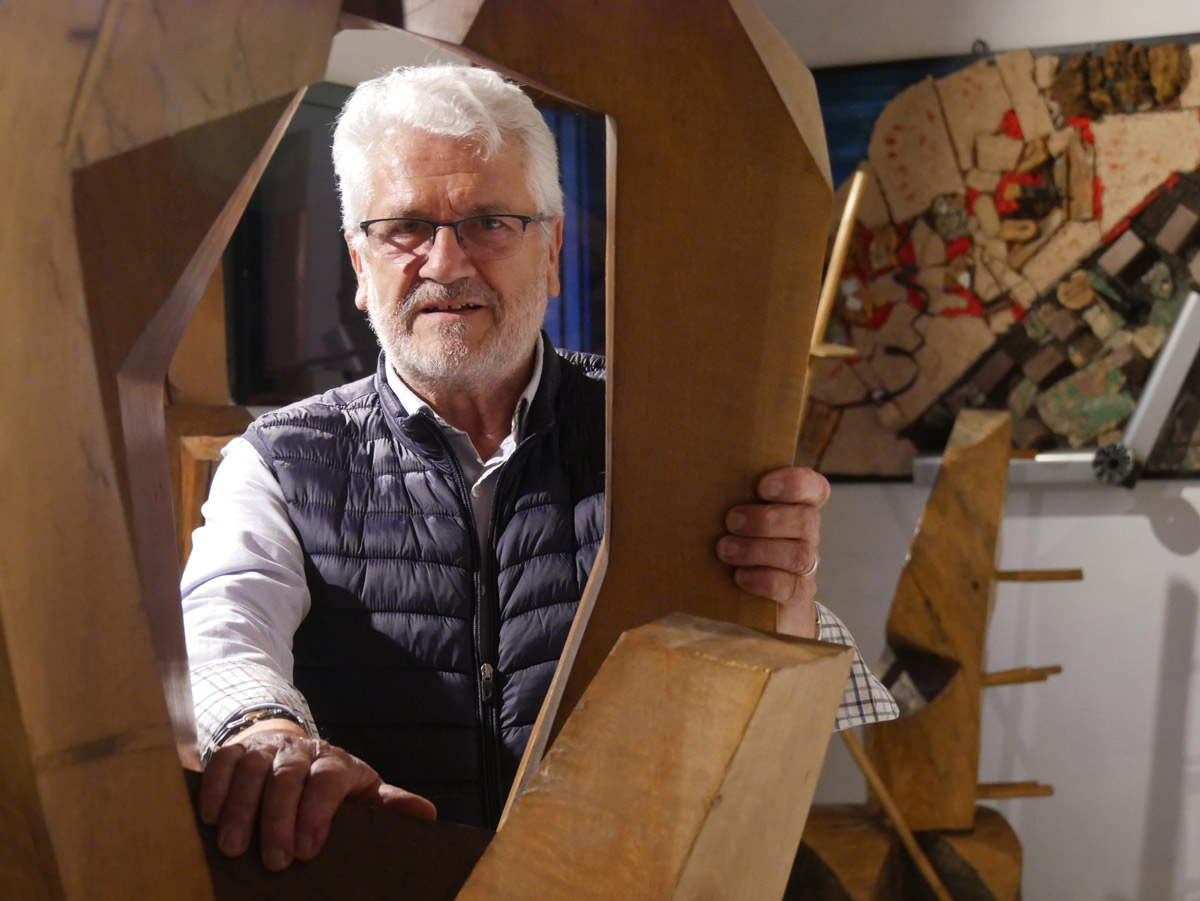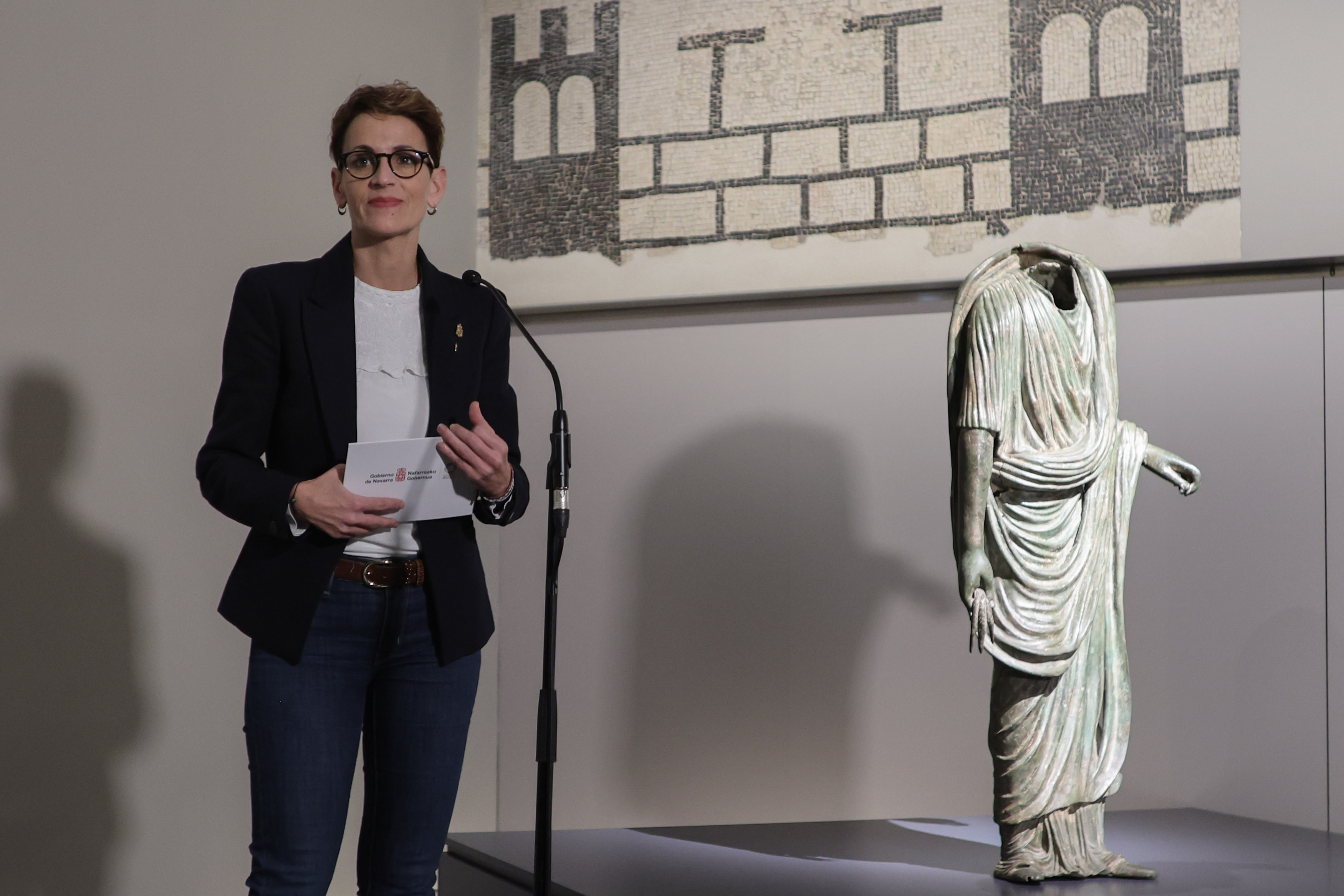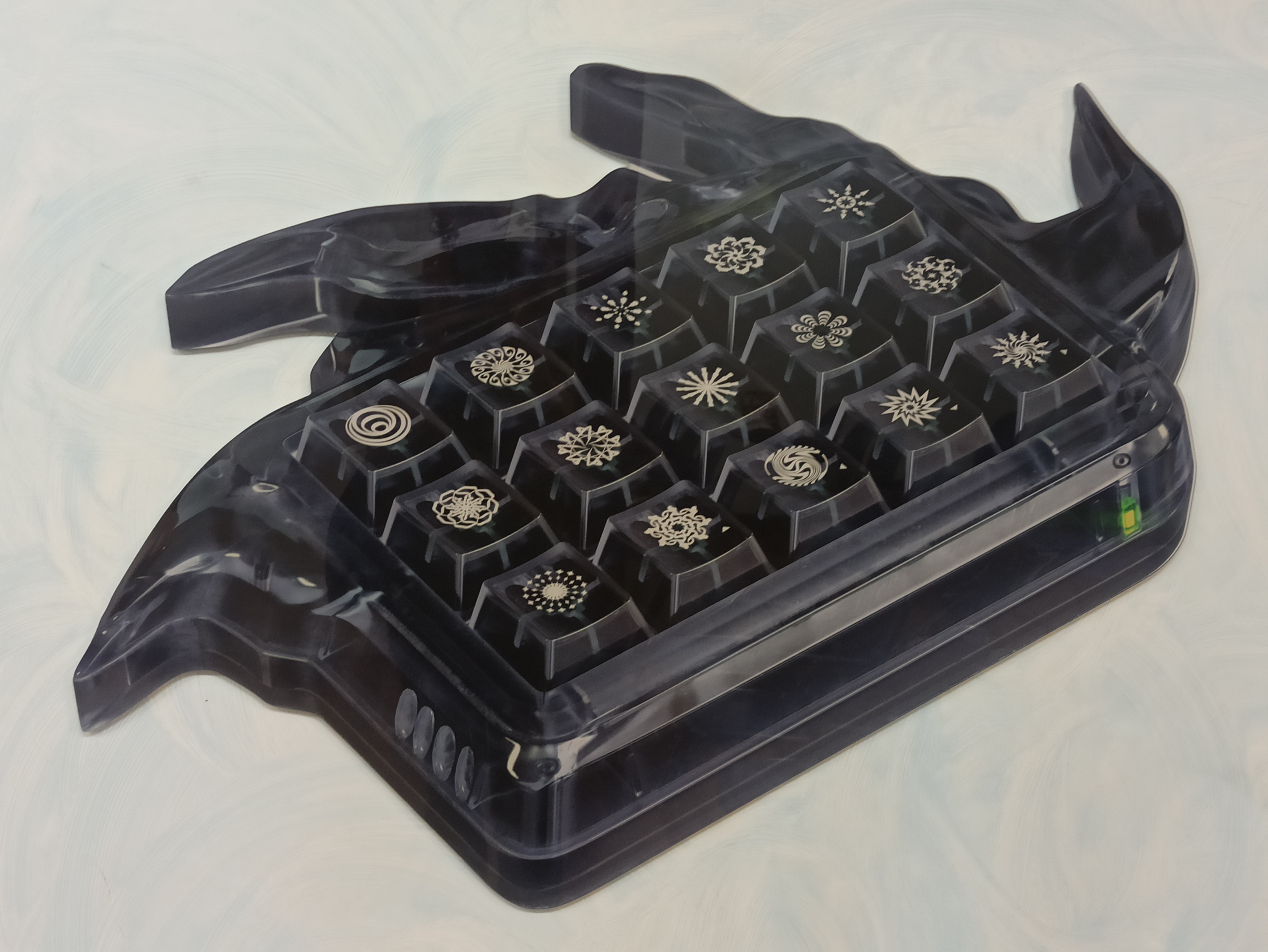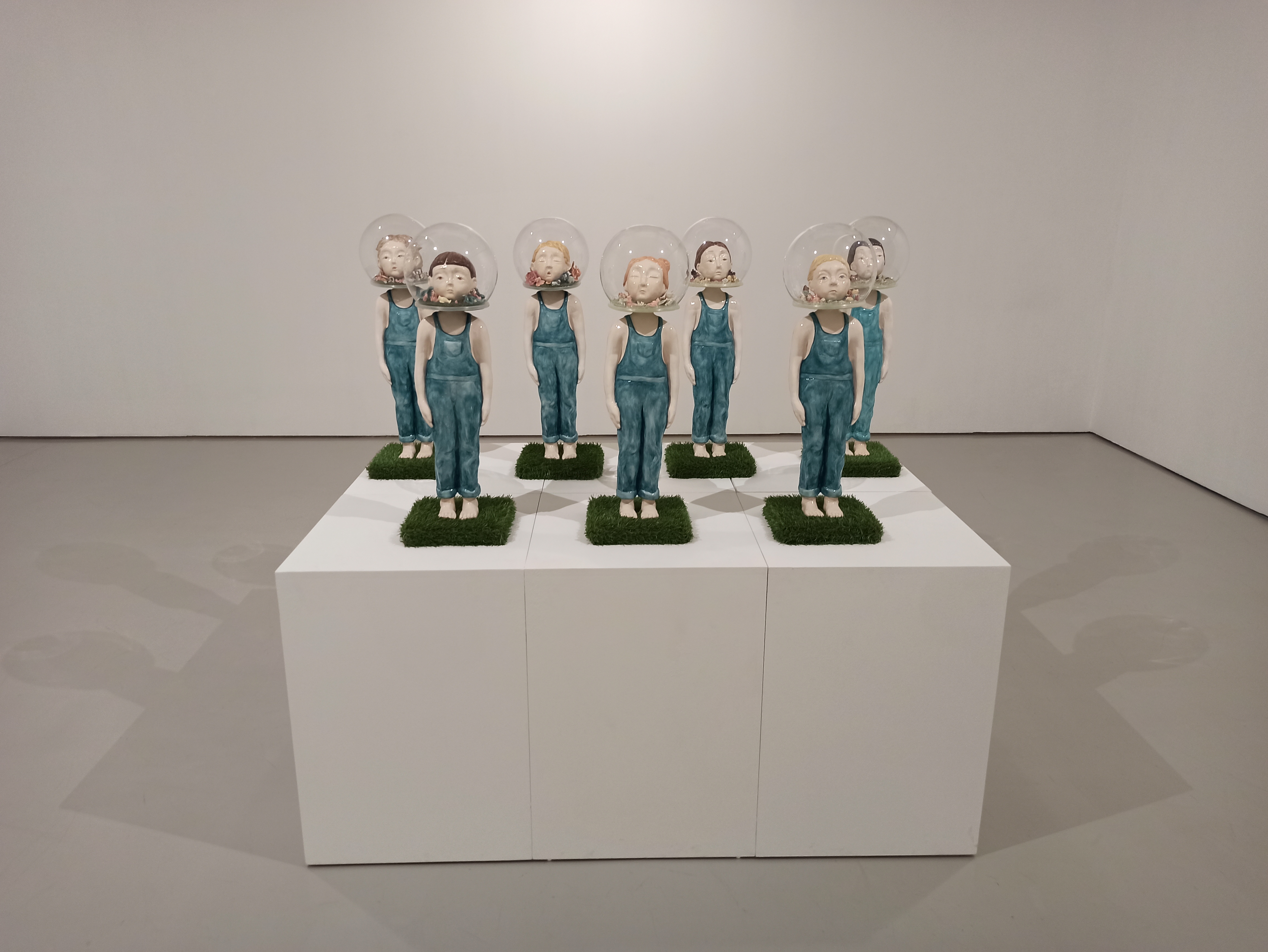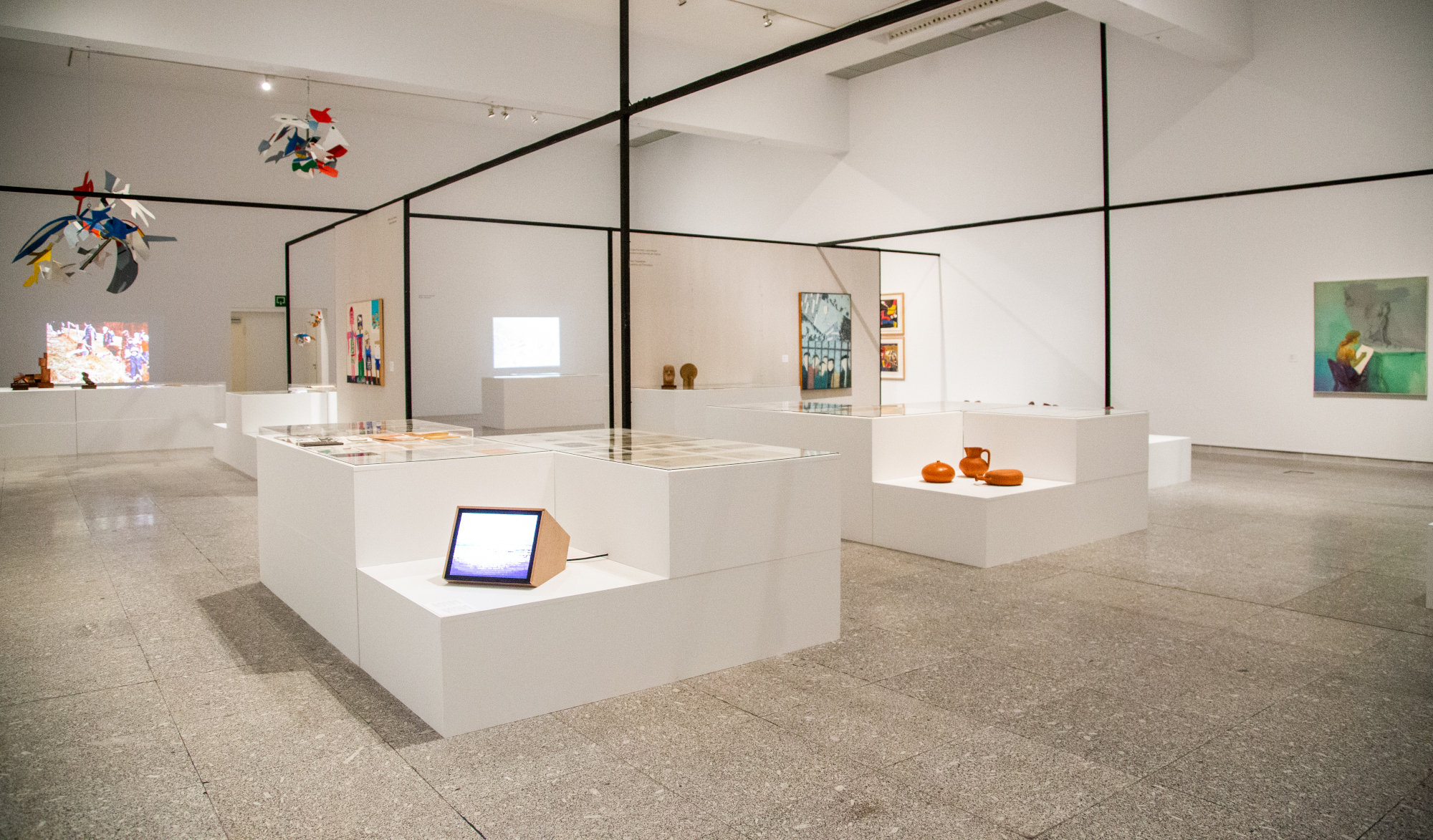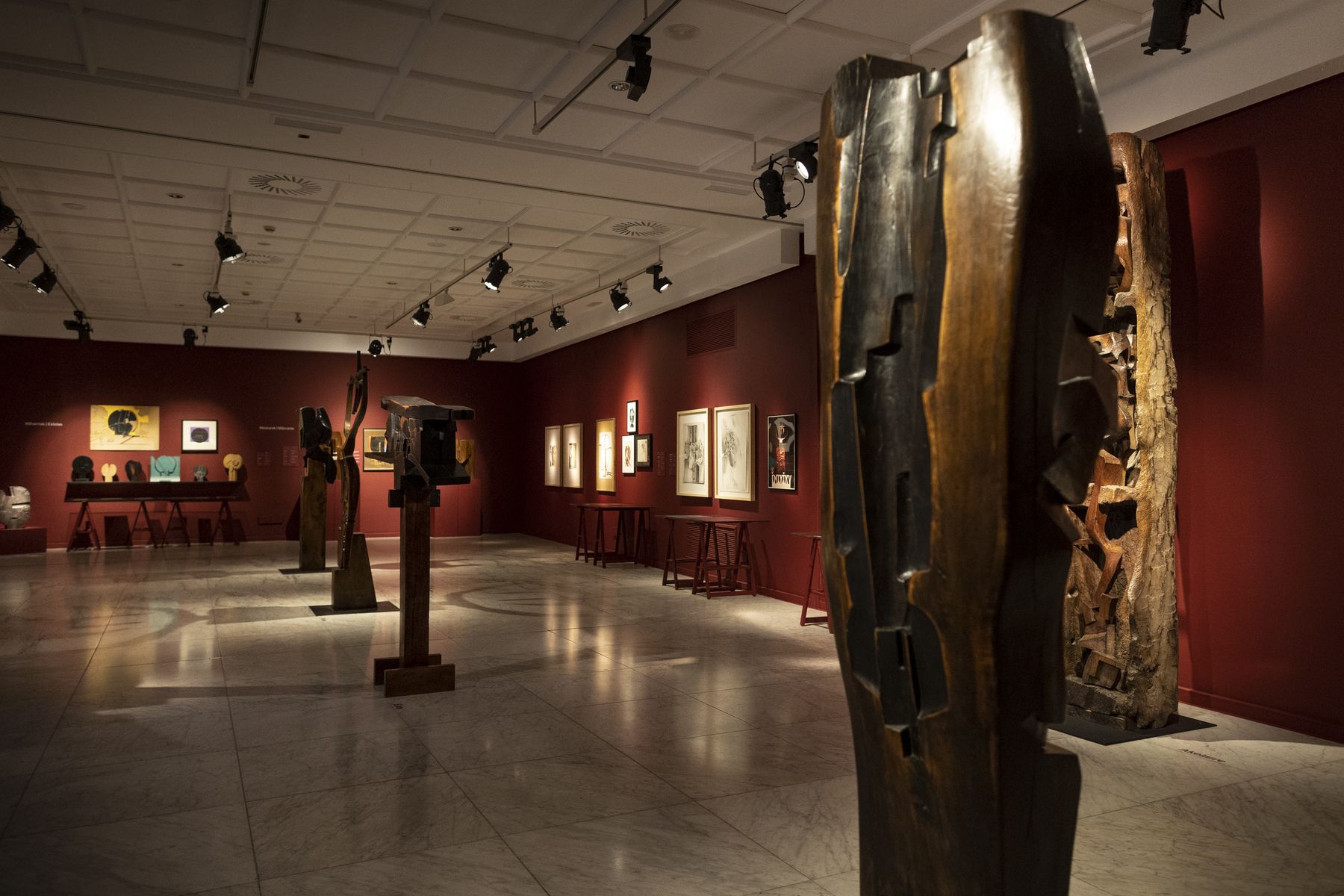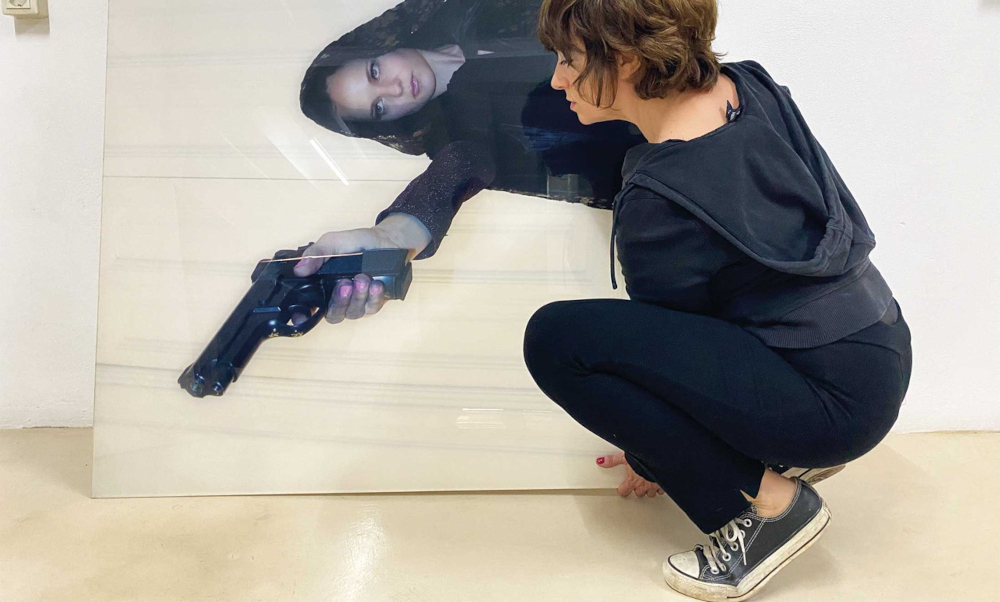Gris de Mañaria
- In the early 1970s, artist Robert Smithson questioned minimalist art by mouthful and conveyed the idea that art could be done in the landscape and in nature itself. Thus, following this idea of creation, several artists began to make preparations in the field, moving their projects, leaving the galleries, museums and cities and moving them to deserts, cannons and quarries. Among them were Richard Long, Walter de María, Christo or Michael Heizer. Artistic intervention in the landscape or in nature itself is known as land art in the history of art, are transitory works and enormous in terms of dimensions and resources. In an abandoned quarry in Mañaria we found a project that aligns with the ideas of this movement, the Art Space of Angurreta.
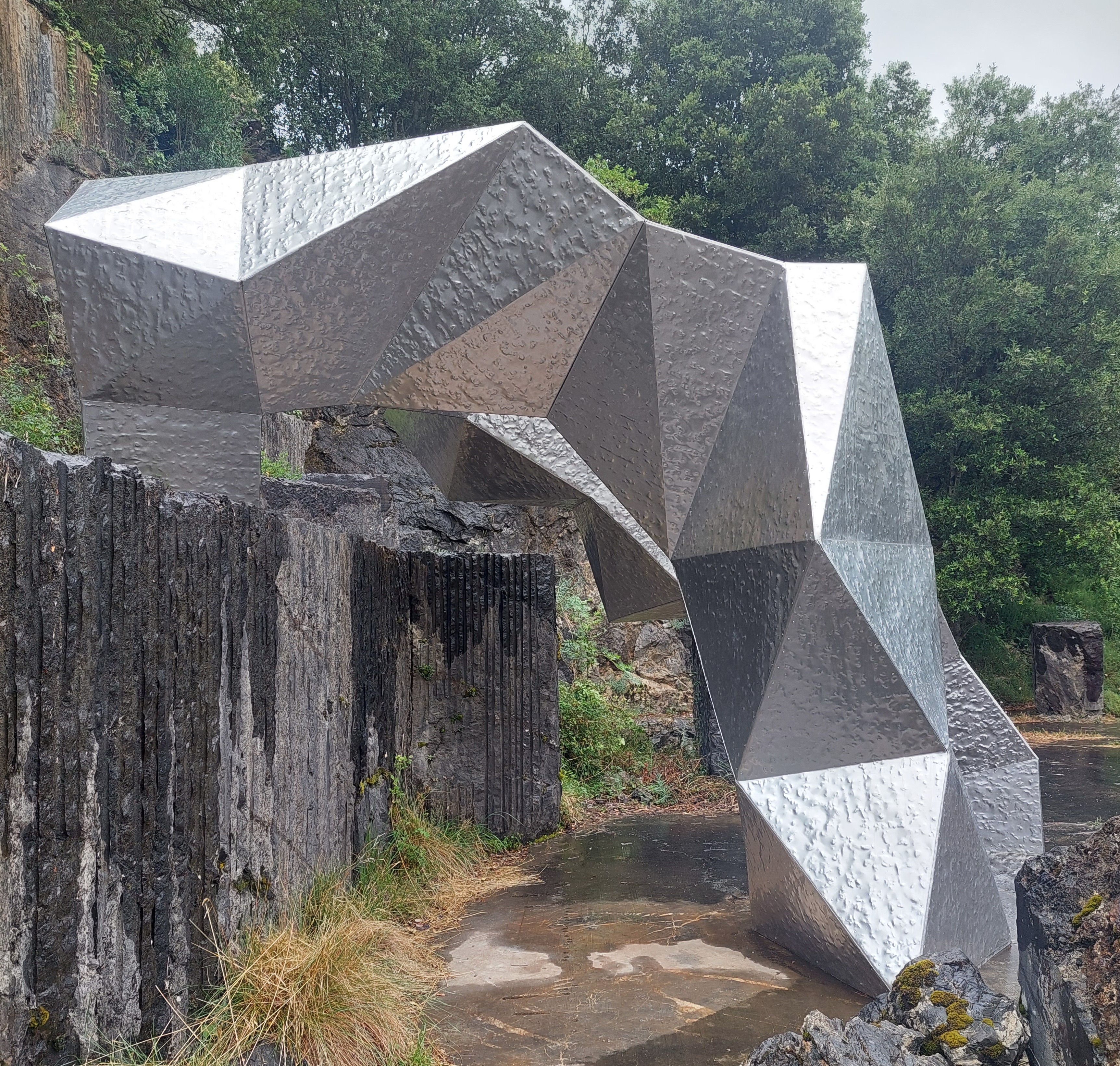
As recently happens to me many times, I have known through Instagram the recent inauguration of the artistic intervention of the Japanese artist Tanadori Yamaguchi (Nagoya, 1970) in a Mañaria quarry. The excuse has been a exile and a rainy morning. We have come on foot, after passing a humid and lush forest, to the quarry of Angurreta. Men's work and machine bites have eaten for decades natural flesh: it was the first mountain, in which there were holes; before it was complete and full, in which nudes and absences were shown. There are many farms in our surroundings, both in the past and today, that have been carried out on the mountain to give way to the immense infrastructure of questionable magnitude that modern times entail. The remnants of these extractions are, for example, the athered vertical fronts, the horizontal platforms, the artificial cannons, the landfills, the coals and the small buildings that are generated on their margins.
From the Angurreta quarry, in the Aldebaraieta district of Mañaria, the stone known as Mañaria gray or Mañaria gray was exploited, a limestone of marble with a dark brown hue and white streaks. Apparently, until recently, this material was widely used as a decorative element for the construction of luxury houses and palaces, such as sockets and pillars. The quarry remained active until the 1970s and once the exploitation work was completed, this extractive mining area was forgotten until the sculptor Victor Arrizabalaga gave it a new life. The artist who lives and works in Durango and Yamaguchi met fifteen years ago in an exhibition of groups organized in León (Castilla y León), and the result of the constant dialogue they have maintained since then is what they have gathered today in the project entitled The Imprint of Time.
The sculptor Tanadori Yamaguchi studied art at the University of Kyoto and has been living in Asturias since 1998. He is in contact with galleries and universities and has exposed his creations there and here. Expert in arts applied to stone, stone is the raw material of many of his sculptures, so he received the invitation for an artistic intervention in a quarry. For the quarry Angurreta, it has presented a creation composed of four sculptures that have been dedicated to site specific or space. In the gray and geometric landscape of the quarry it has created polyhedral forms of aluminium that merge between large-scale rocks and integrate into the natural landscape. The sculptures, of internal steel structure and aluminum bark, have been made in the workshop of Arrizabalaga and placed them between blocks of rock, naughty forms that escape from the vertical and straight walls of the quarry.
By ordering Yamaguchi this work they placed three conditions: he could not move stone blocks; the work should relate to the history of the quarry and keep alive the memory of the quarry. With these three conditions is born the project The Time Footprint. The artist has taken the rough texture of the stone blocks to aluminum sheets, for this purpose in the study of Arrizabalaga has crushed the sheets against a stone for the texture of the stone to be printed in bright material. Contrary to what happens with the heavy stone blocks of the quarry, and contrary to what the sculptures represent at first glance, the sculptures are agile, because they are empty inside; without meat, in this case everything is bone and skin. The long and abrupt polyhedron, three, four and five sides, which Yamaguchi has situated in the upper part of Angurreta, follows the silhouette of Mount Eskubaratz, which separates from the hill of Urkiola in front, as a painting with two separate planes.
This rocky landscape of Mañaria, in itself and taking into account the disposition of the large stone blocks, has its own beauty: it shows spirals forms, harmonic compositions are observed and the empty spaces have a great capacity of attraction. There is an atmosphere of order that dominates all this, with the charm of what a garden might be. As we approach stone blocks, we see the effects of extractive activity stepping on the surface of the large stone blocks. Some blocks have perfect horizontal lines, they are bites that are directed towards the interior of the sawmill with steel helical wire. Stone flesh is visible, an interior skin of a lighter gray, vein, open in half. We put our hands on him, as if we could relieve the pain of that wound.
In general, Yamaguchi’s artistic practice is directly related to the nature and landscape surrounding it. As in this case, the nice thing is to see how the sun, humidity or rain directly affect the pieces, how they are transforming these pieces and if the remains of nature are marked on the surface of the sculpture. The mark of man in this natural space of the past will leave an eternal mark on the creation of man by nature. Likewise, this installation will witness the passage of time and the polyhedral form linked to the terraces of the quarry will offer us the opportunity to re-read the abandoned space, showing the temporality.
They have designed an interesting tour of the quarry, crossing large stone blocks and Yamaguchi sculptures, walking is an easy walk. Located in nature, this facility also offers great views of the Urkiola sites. It is undoubtedly the perfect excuse to enjoy this natural corner.
Eskultura grekoerromatarrek bere garaian zuten itxurak ez du zerikusirik gaurkoarekin. Erabilitako materiala ez zuten bistan uzten. Orain badakigu kolore biziz margotzen zituztela eta jantziak eta apaingarriak ere eransten zizkietela. Bada, Cecilie Brøns Harvard... [+]
Behin batean, gazterik, gidoi nagusia betetzea egokitu zitzaion. Elbira Zipitriaren ikasle izanak, ikastolen mugimendu berriarekin bat egin zuen. Irakasle izan zen artisau baino lehen. Gero, eskulturgile. Egun, musika jotzen du, bere gogoz eta bere buruarentzat. Eta beti, eta 35... [+]
On Monday afternoon, I had already planned two documentaries carried out in the Basque Country. I am not particularly fond of documentaries, but Zinemaldia is often a good opportunity to set aside habits and traditions. I decided on the Pello Gutierrez Peñalba Replica a week... [+]
The search, the continuous search for a path, implies discovering what we do not want or expect. An artist should feed this appetizing search if he wants to keep his spirit alive. Your career is also going to need a big head office. Looking for new ways, uncovering and expanding... [+]
I get contradictions in art competitions. On the one hand, they place artists and works of art within the dynamics of competitiveness, leaving aside the transformative and collective character of art and placing them within the mercantilist logics, but it cannot sometimes be... [+]
Eskuin muturreko ekintzaileei leporatu diete eskultura bandalizatu izana: Hau kaka euskalduna da idatzi dute frantsesez, eta Heil pepito agur nazia margotu. Jean-René Etxegarai auzapezak jakinarazi du salaketa jarriko dutela. Gainera, Frantziako Alderdi Komunistaren... [+]
In the Plaza de los Fueros de Vitoria-Gasteiz there is a new metal sculpture that welcomes the exhibition of Nestor Basterretxea (Bermeo, 1924 – Hondarribia, 2014). The exhibition brings together more than 300 works created by artists from different areas, such as posters,... [+]














